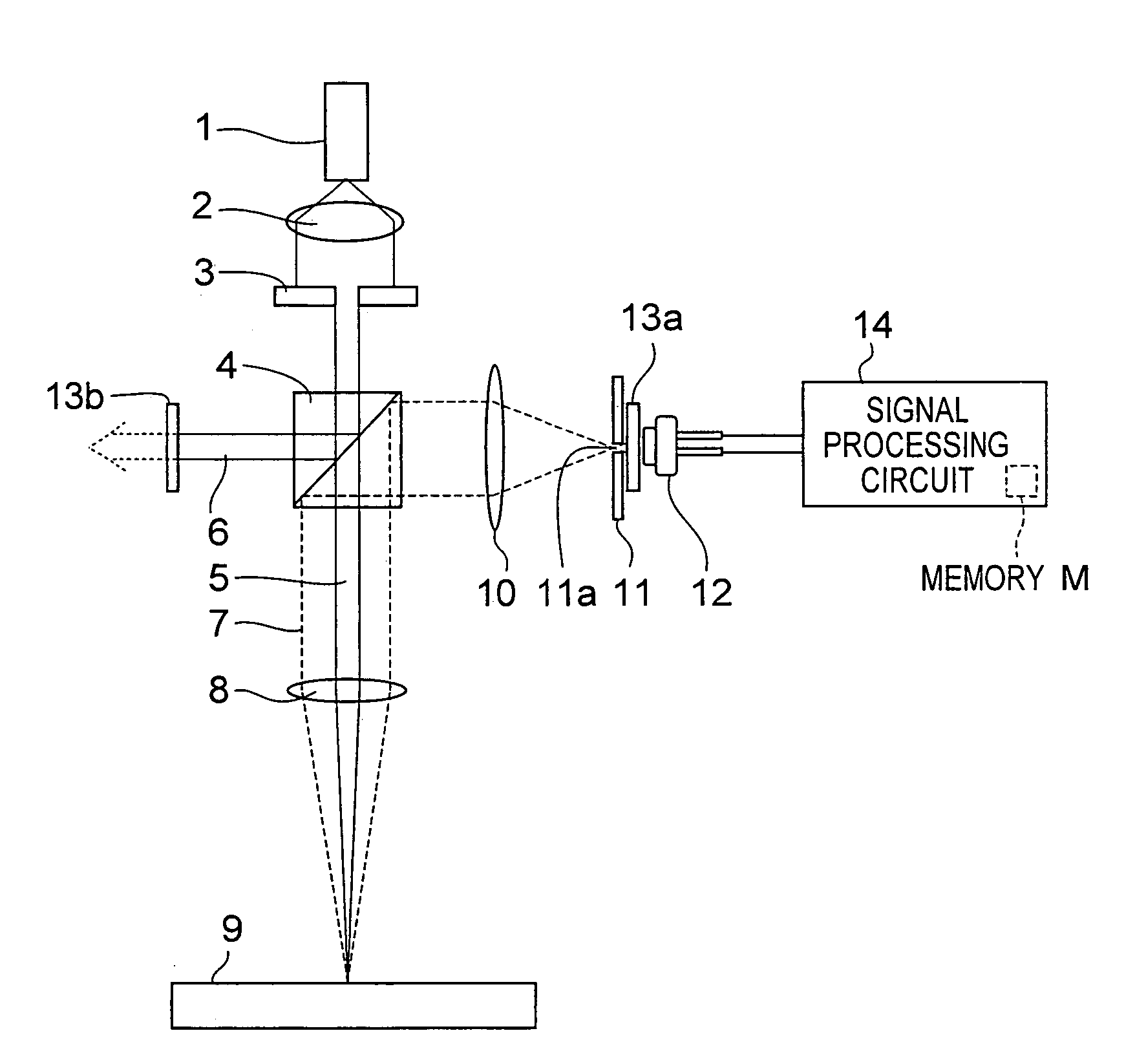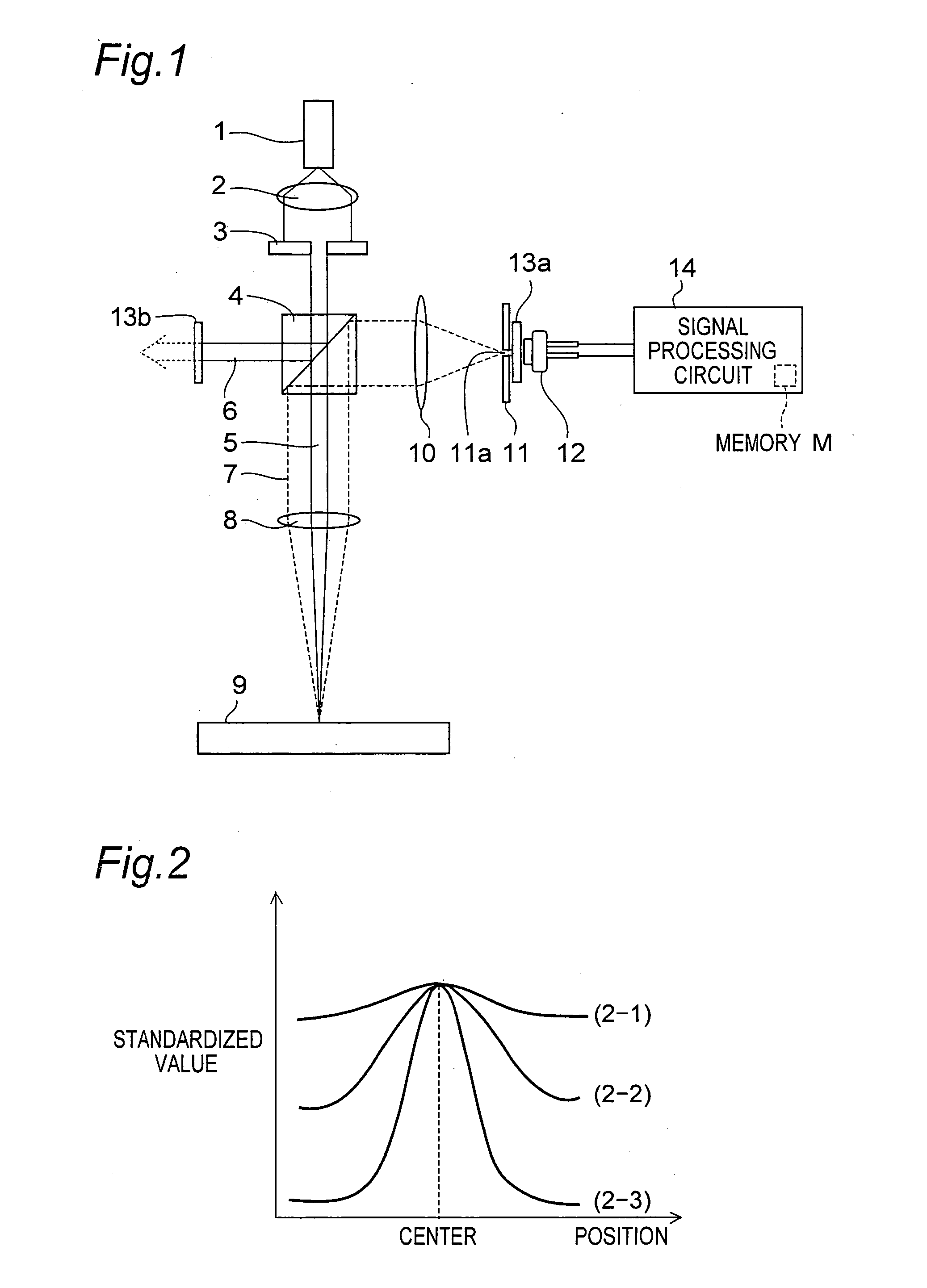Optical object discriminating device
a technology of optical object and discriminating device, which is applied in the direction of optical radiation measurement, instruments, cameras, etc., can solve the problems of mechanical reliability deterioration, mechanical type floor surface discriminating sensor reliability problems, contact portion wear, etc., and achieve high reliability, accurate detection of unevenness of any measuring object, and small size
- Summary
- Abstract
- Description
- Claims
- Application Information
AI Technical Summary
Benefits of technology
Problems solved by technology
Method used
Image
Examples
first embodiment
[0480]FIG. 1 is an outlined configurational view of an optical object discriminating device according to a first embodiment of the invention. FIG. 1 shows a locus of a light beam and principal optical parts, and does not show such components as those for holding the optical parts. In this case, the semiconductor light emitting element serving as a light source may be given by an LED (Light Emitting Diode) or LD (Laser Diode) or the like, either of which may be adopted only if its light density on a measuring object 9 is at a desired value or more. It is noted that LDDs are higher in collimatability than LEDs and therefore capable of condensing a light beam into a smaller beam diameter and therefore enhancing the light quantity per unit area. Thus, LDs are preferred. From these reasons, an LD is shown as an example of the semiconductor light emitting element in this embodiment of the invention, and LDs are adopted as an example of the semiconductor light emitting element in the follo...
second embodiment
[0510]FIG. 4 shows an outlined configuration of an optical object discriminating device according to a second embodiment of the invention. In FIG. 4, a locus of a light beam and principal optical parts are shown, and such components as those for holding the optical parts are not shown. Also in FIG. 4, the same constituent parts as those of the first embodiment shown in FIG. 1 are designated by the same reference numerals as those of the constituent parts in FIG. 1, and their description is omitted. This second embodiment differs from the foregoing first embodiment in that a mirror 15 as a lead part is included in place of the non-polarization beam splitter 4 of the modification example of the first embodiment.
[0511] In the second embodiment, the first beam 5 outputted from the aperture 3 is incident directly on the edge portion 8a of the objective lens 8, being focused on the measuring object 9 placed at the focal length of the objective lens 8. Further, since the first beam 5 beco...
third embodiment
[0515] Next, FIG. 5 shows an outlined configuration of an optical object discriminating device according to a third embodiment of the invention. In FIG. 5, a locus of a light beam and principal optical parts are shown, and such components as those for holding the optical parts are not shown. Also in FIG. 5, the same constituent parts as those of the first embodiment shown in FIG. 1 are designated by the same reference numerals as those of the constituent parts in FIG. 1, and their description is omitted.
[0516] This third embodiment differs from the foregoing first embodiment in that the linear polarizer 13b is not included while a mirror 15 as an optical axis changing part is included in adjacency to the non-polarization beam splitter 4.
[0517] In this third embodiment, the first beam 5 that has passed through the non-polarization beam splitter 4 is incident on the objective lens 8, while the second beam 6 reflected by the non-polarization beam splitter 4 is reflected by the mirror...
PUM
 Login to View More
Login to View More Abstract
Description
Claims
Application Information
 Login to View More
Login to View More - R&D
- Intellectual Property
- Life Sciences
- Materials
- Tech Scout
- Unparalleled Data Quality
- Higher Quality Content
- 60% Fewer Hallucinations
Browse by: Latest US Patents, China's latest patents, Technical Efficacy Thesaurus, Application Domain, Technology Topic, Popular Technical Reports.
© 2025 PatSnap. All rights reserved.Legal|Privacy policy|Modern Slavery Act Transparency Statement|Sitemap|About US| Contact US: help@patsnap.com



